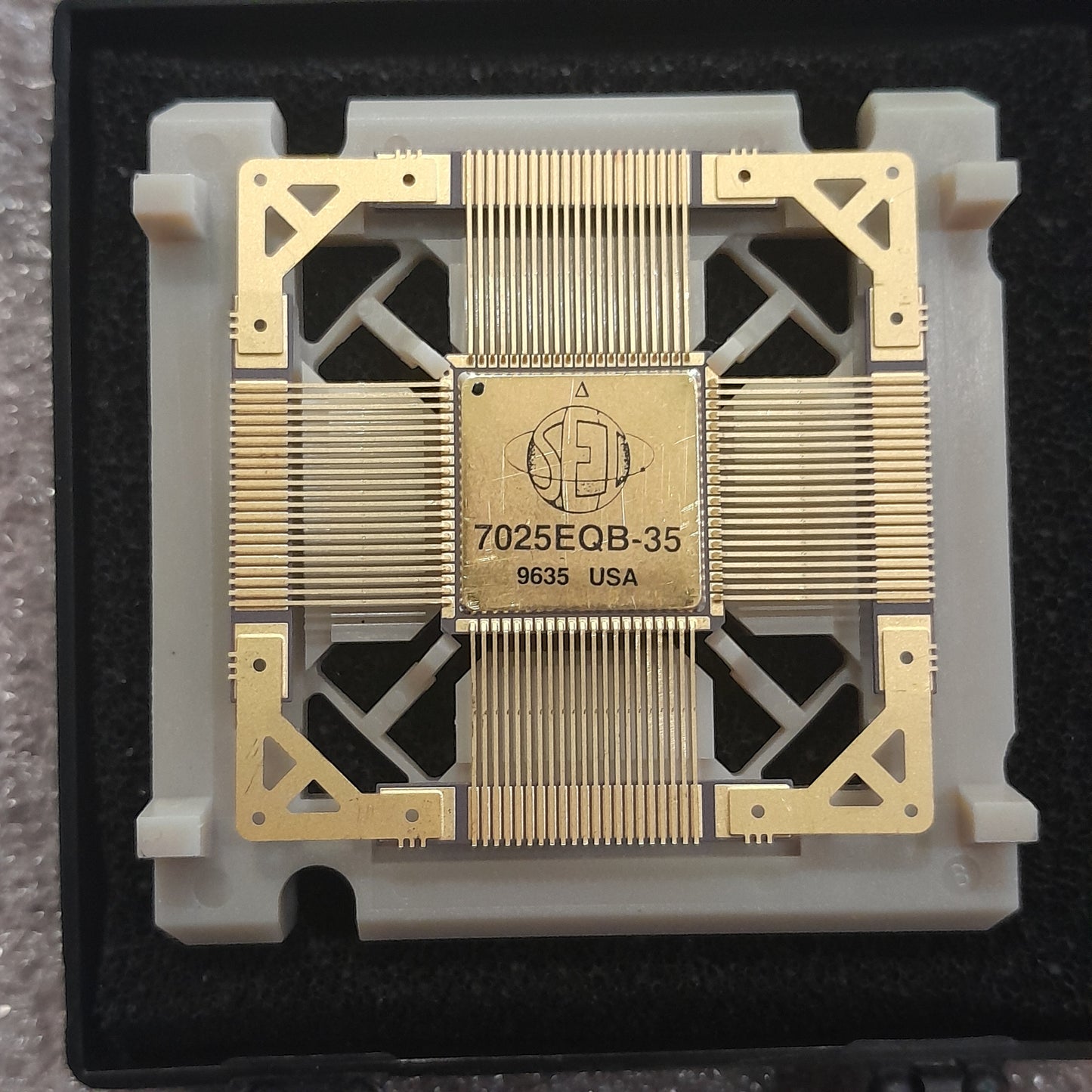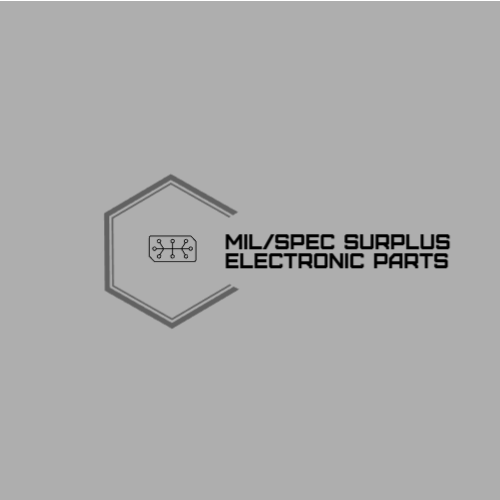MIL/SPEC SURPLUS ELECTRONICS (NOS)
**ATTENTION IC COLLECTORS** SIE IDT7025 is a high-speed from Leigh Instruments dual-port static RAM (SRAM) designed for applications requiring shared memory access between multiple processors (NOS MIL/SPEC GOLD CHIP EXTREAMLY RARE)
**ATTENTION IC COLLECTORS** SIE IDT7025 is a high-speed from Leigh Instruments dual-port static RAM (SRAM) designed for applications requiring shared memory access between multiple processors (NOS MIL/SPEC GOLD CHIP EXTREAMLY RARE)
Couldn't load pickup availability
Identification and Manufacturer
After analyzing the uploaded image of the IC chip and cross-referencing the markings ("7025EQB-35", "9635 USA", and the stylized logo in the center that appears as "SED" or similar), this chip closely matches the IDT7025 series from Integrated Device Technology (IDT), now part of Renesas Electronics. The logo may be a misinterpretation or a foundry/variant marking; IDT chips from this era often featured custom or stylized identifiers, but the part number structure, package type, and date code align strongly with IDT's production. IDT was a U.S.-based semiconductor company specializing in high-performance memory and logic ICs, with manufacturing in the USA during the 1990s. The "9635" is a date code indicating production in week 35 of 1996, which fits IDT's timeline for this product line.
No exact match for "EQB-35" appears in standard catalogs, but it could denote a specific variant, engineering sample, military-grade suffix, or package code (e.g., "QB" might relate to quality binning or custom ordering). Standard IDT7025 parts use suffixes like "S/L" for power variants and "G" for PGA packages, but custom markings were common for military or OEM applications. The closest standard part is the IDT7025S/L35G, a military-compliant version.
Use and Application
The IDT7025 is a high-speed dual-port static RAM (SRAM) designed for applications requiring shared memory access between multiple processors or systems without interference. Dual-port means two independent ports can read/write simultaneously, making it ideal for:
Multiprocessor communication (e.g., in embedded systems, workstations, or early servers).
Buffer memory in networking equipment, video processing, or real-time data handling.
Military and aerospace systems, given the ceramic PGA package's robustness against harsh environments (e.g., radiation-hardened variants under MIL-PRF-38535 compliance).
Vintage computing: Similar chips were used in high-end systems from the 1990s, like Sun Microsystems workstations or industrial controls, where fast, reliable memory was critical.
This chip's era (1996) places it in the transition from 16-bit to 32-bit architectures, often used in combination with other chips for wider bus widths (e.g., as a "MASTER/SLAVE" pair for 32-bit systems).
Specifications
Based on the IDT7025/7026 datasheet (which covers similar variants):
Memory Organization: 8K x 16 bits (128K bits total, or 16KB).
Access Time/Speed Grade: 35 ns (-35 suffix), suitable for high-speed operations up to about 28 MHz clock rates.
Package: 84-pin Ceramic Pin Grid Array (PGA), with gold-plated pins and lid for enhanced durability and heat dissipation. Pin count matches the high-density array visible in your image (approximately 84 pins in a staggered grid).
Voltage Supply: 4.5V to 5.5V (standard 5V CMOS).
Power Variants: Standard power (S) or low power (L); your chip likely falls under military/low-power due to the package.
Operating Temperature: Military grade: -55°C to +125°C; commercial: 0°C to +70°C. The ceramic construction and USA marking suggest it could be mil-spec.
Features:
True dual-ported memory cells for simultaneous access.
Busy logic and interrupt flags for port arbitration.
Low power consumption in standby mode (e.g., <1 mW for L variant).
Fabricated using high-performance CMOS technology.
Dimensions: PGA package typically ~1.5" x 1.5" square, matching the size in your photo.
Compatibility: Can be used standalone or in Master/Slave mode for expanded width/depth.
This chip was fabricated using IDT's advanced CMOS process, ensuring reliability in demanding environments. It's now obsolete, with last-time-buy options ending around 2018.
Share


